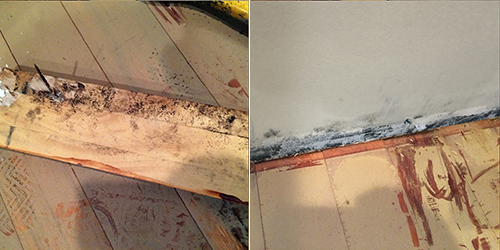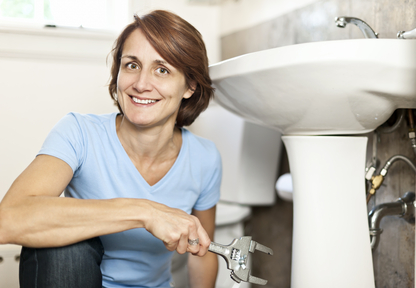Ways to Repair a Water-Damaged Wall in the Bathroom
Ways to Repair a Water-Damaged Wall in the Bathroom
Blog Article
Just about everyone maintains their own individual opinions involving Preventing Water Damage in the Bathroom.

The washroom is extremely susceptible for wet accumulation and prospective water damages due to the regular use water in it. This article provides straightforward inspection methods to aid detecting water damage risks.
The regular use water in the shower room makes it exceptionally vulnerable for moist accumulation and prospective water damage. By checking it on a regular basis, you can lower water relevant problems.
The complying with collection of examinations is very easy to perform and ought to be done when in every 3 months in order to maintain your washroom in good shape and to prevent prospective water problems triggered by the bath tub, the shower, pipeline joints as well as plumbing, sinks, cupboards, and also the commode
Do not forget performing these inspections and be comprehensive while doing them. Bear in mind that these basic assessments can conserve you a great deal of cash by supplying very early indicators for water damage
Sinks and Cabinets
Sinks and cabinets are exposed to moisture and moisture daily as well as are typically neglected. Examine frequently under the sink as well as on the counter top above it. Repair any drip in the catch as it might recommend drain issues. Look around the sink, slow-moving draining pipelines may indicate an obstructed drainpipe. Replace sink seals if they are fractured or loosened.
Tub and also Shower
The shower as well as bathtub call for special attention and also upkeep. Check the floor tiles as well as replace if fractured. Make certain that there is no missing cement in between the tiles. Evaluate as well as replace fractured caulking at joints where the walls meet the flooring or the tub. Obstructed drains pipes and pipelines issues will certainly stop the bathtub from drying out as well as might show severe issues beneath the bath tub. Talk to a professional immediately to stop structural damages. Focus on discolorations or soft locations around the tub walls as they might indicate an inner leak.
Plumbing
Signs for water damage are difficult to spot given that a lot of pipes are set up inside the walls.
Pay unique attention to floor covering as well as wall surfaces wetness and spots as they may show an unnoticeable plumbing trouble. Inspect dampness levels in adjacent spaces too.
The Bathroom
The commode is a vulnerable water junction. Examine the water lines and search for leakages around the toilet seat, in the pipe, and under the water storage tank. If you identify any indicators of moisture on the floor around the bathroom, look for leaks in the toilet rim and also tank seals.
Understand that hanging commode dish deodorants boosts the opportunities for clogs.
TIPS TO PREVENT WATER DAMAGE IN THE BATHROOM
The average household uses approximately 80-100 gallons of water per person per day. For a family of 4, that's almost 2,500 gallons of water a week! The largest portion of this consumption comes from bathroom use. Flushing the toilet uses the most water, followed by taking a shower or bath. With that much water running through the home, water damage in the bathroom is bound to happen. Knowing how to spot signs of a water leak is essential to preventing long-term damage. This guide provides you with tips to reduce the impact of water damage on your bathroom.
CAUSES OF BATHROOM WATER DAMAGE
Pipe breaks are the most common cause of water damage we see in our daily jobs. The age of a pipe plays a large role in a pipe break as well as corrosion. Over time, the metal begins to break down, allowing water to escape. Frozen pipe breaks are also a concern in the winter months. Toilet overflows caused by paper products or children flushing inappropriate items. Degraded caulking around the toilet or bathtub can allow water seepage, sometimes behind the fixture, into the subfloor or walls. Condensation forms when the water in a pipe is cooler than the air temperature. Beads of water form on the exterior of the pipes, sometimes so much so that the water begins to drip and pool below. Sink or shower backups created by poor drainage. HOW TO PREVENT WATER DAMAGE IN YOUR BATHROOM
Inspect your toilet supply line for worn or frayed hoses and replace them as needed. Winterize your plumbing to prevent a frozen pipe break. Use vent fans to prevent condensation that can lead to mold growth. Routinely check and replace degraded caulking around your toilet or bathtub. Increase the temperature in your toilet tank and insulate your pipes during the warm summer months to keep condensation from forming. Use child safety locks on the toilets. Flush only toilet paper. "Flushable" wet wipes are actually not good for your plumbing system. Additionally, feminine hygiene products should not be flushed. Prevent water from escaping the tub or shower. Make sure shower curtains are in good condition. Inspect shower doors and replace the seal strip if necessary. Wipe up any water that accumulates on the floor and use bath mats. Water left to sit can cause damage to the tiles and flooring. Refrain from using bath products containing heavy oils to avoid a clogged drain.

Do you like reading about Preventing Water Damage in the Bathroom? Write a remark down below. We'd be delighted to know your insights about this piece. We are looking forward that you come back again soon. Sharing is caring. Who knows, you might be helping someone out. I love reading our article about Looking for Signs of Water Damage in the Bathroom.
Book Maintenance Report this page